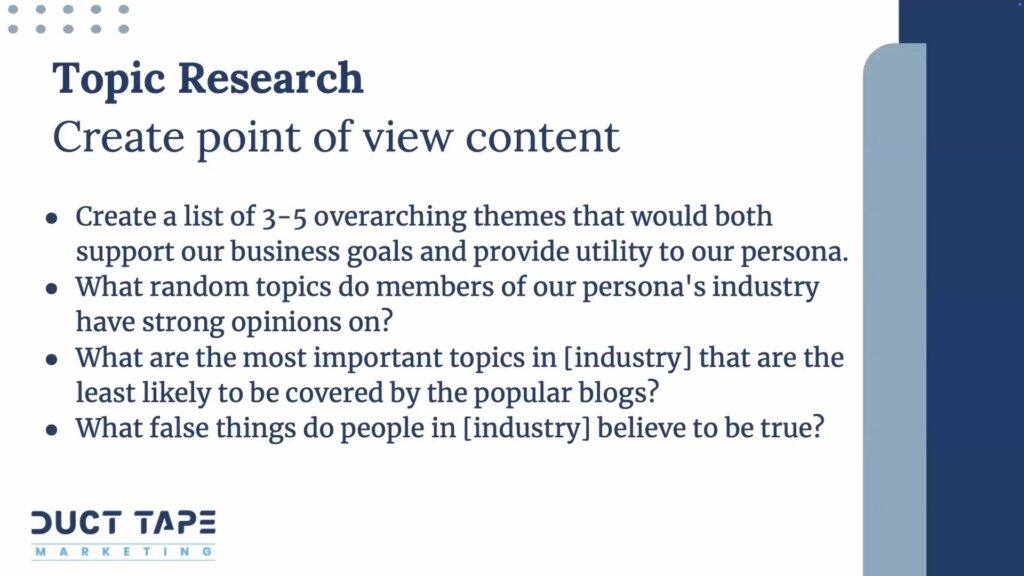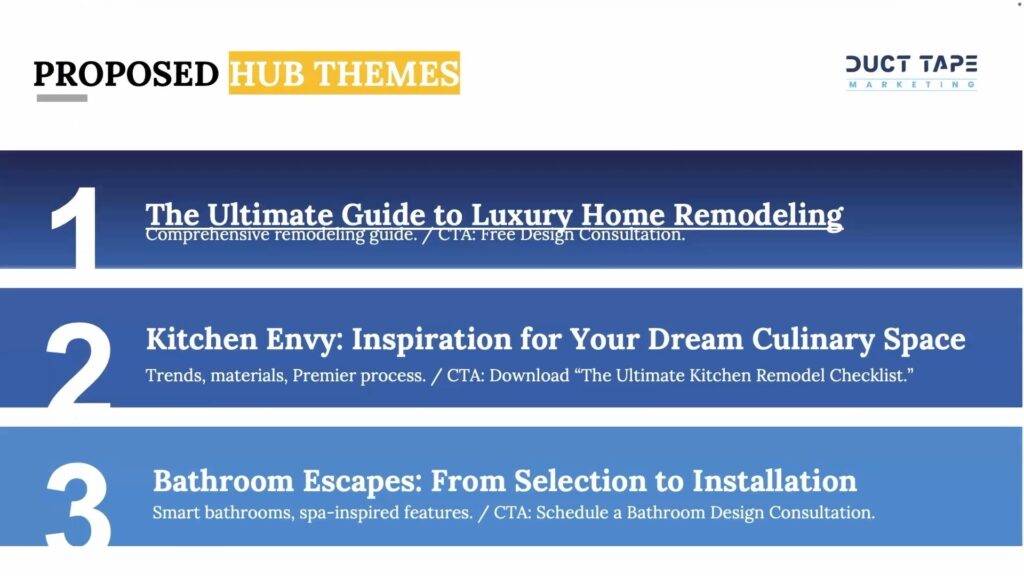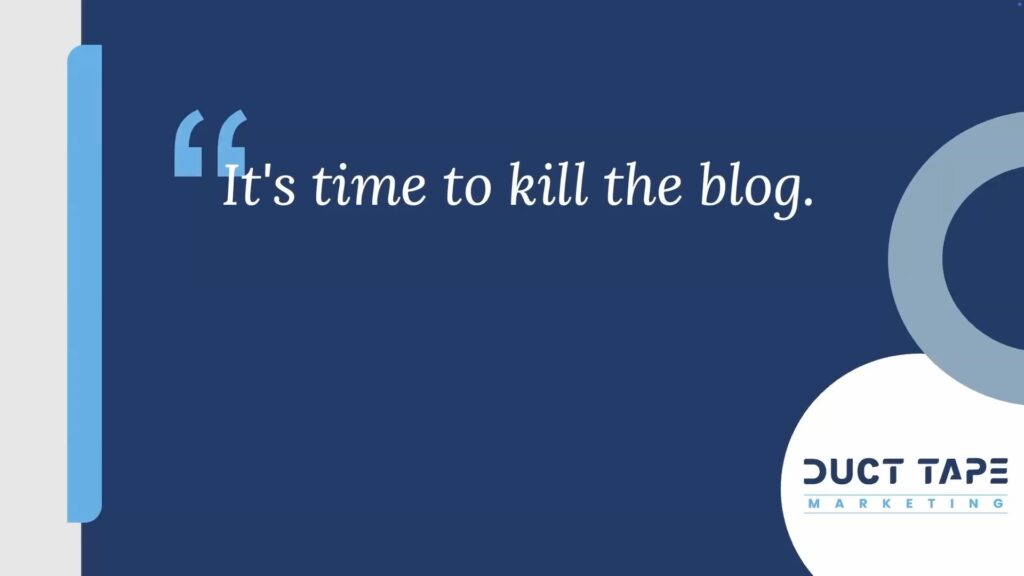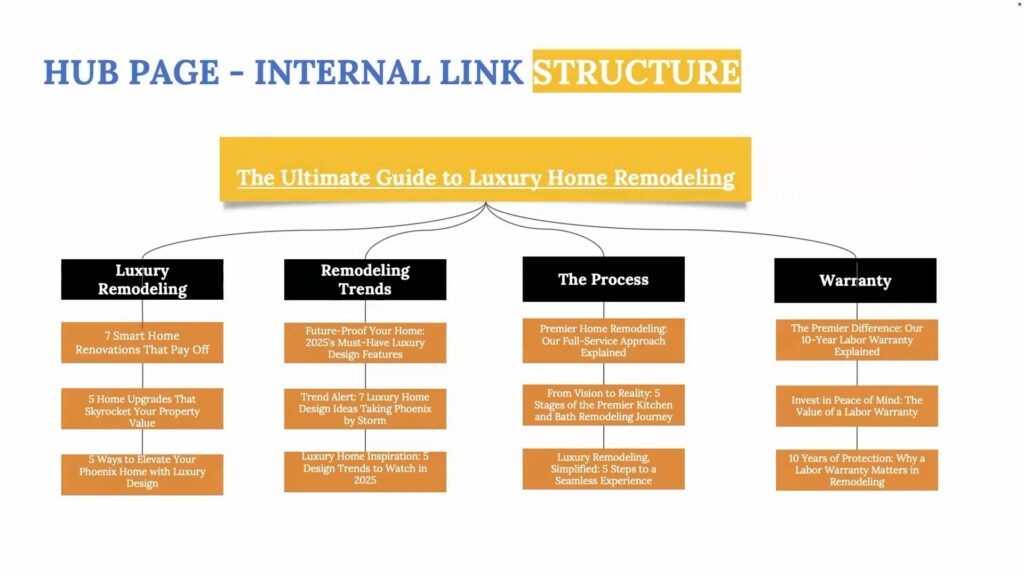
It’s almost a requirement that company websites have a “blog.”
We don’t think twice about it.
That’s where our content goes… right?
That’s where our content goes… to die, warned John Jantsch at B2B Forum 2024.
John presented a different way to structure your content to both serve your customers better, and improve your SEO.
Check out John’s content method in the clip or transcript below.
And for additional ways to improve your customer experience and SEO, join more than 800 of your B2B marketing peers in Boston for this year’s B2B Forum. The program is out and filled with exciting speakers and sessions, inspirational keynotes, workshops, networking opportunities, and more. Check it out, and then grab your ticket here before they’re gone.

We create this “Point of View Content” editorial plan.
And it’s going to be three to five overarching themes that support our business goals, but also would provide utility for our persona.

So we’ll ask some more questions to start getting to those pillar themes.
Then what we will do is build.
We’ll take those three to five themes and we’ll build out content hubs around each of those…
So for us, instead of saying, “what’s a bunch of random stuff we could write about this quarter?” which unfortunately is how some editorial approaches go, what we want to do is say
“What’s a collection of things that we could write about that would all fall under a core important theme or topic?”
This is a home remodeler. So, “The Ultimate Guide to Luxury Home Remodeling.” “Kitchen Envy: Inspiration for Your Dream Culinary Space.” “Bathroom Escapes, From Selection to Installation.”
If you think about a HubPage, it is an entire book with chapters and subchapters that are all going to be around this core theme.

Here’s my bit of controversy and opinion:
“It’s time to kill the blog.”
We all rushed out in about 2015 or so and said, “every business has to have a blog. Everybody has to have a blog!”
Well, if you recall back in 2002 or 2003 or so when blogs came around, they were essentially journals that were conversations typically from the writer to readers who subscribed to this technology and in a lot of cases engaged with the blogger.
Now, those still exist. They’re still out there.
But 90% of what we are calling a “blog” today is really just content that a brand is putting out under this thing called “a blog.”
I would suggest that there are very few people coming to your websites going, “I’m going to go see what their blog says today.”
So why are we still using this outdated approach that essentially, when we write content, goes on our website—maybe we categorize it, maybe we’ve gotten clever and grouped a few things together—but essentially it goes out into the ether in a chronological manner.

And for all intent and purposes, unless Google thinks it’s really awesome, it disappears.
So the idea behind a HubPage is what if we started…
And again, I’m not saying that people don’t need this content.
They just need to find it!
They need to be able to use it in a way that is much more practical and is actually much more around, frankly, their goals in coming to our website in general.
So the idea, I’ll just tell you, every client that we have today, we are taking the word “blog” out of their navigations.
And we are replacing it with guides or resources or hub pages.
Essentially, they are playbooks or playlists of content around our core themes.
Does that make anybody nervous?
We’re really invested in this idea of the blog, but it’s just not useful for a business website anymore.
But if people could come to your website and they could find—in our remodeling contractor example—they could find The Ultimate Guide to Remodeling Your Kitchen.
Yeah, that they’re interested in.
Especially if there are basically 25 blog posts all linked together in a table of contents in a way that actually allows them to consume thousands and thousands of words around a specific topic.
It’s far more useful for the actual visitor.
And search engines that we have today actually love the structure.
Because now you’ve created something that is a deep resource that is easy to navigate, that is all linked together, instead of the one-off blog post that goes out into the ether.
The Ultimate Guide to Luxury Home Remodeling has four subtopics—and I’m just using examples—and maybe three blog posts (see, I use the blog word!)

Content management systems are still very useful technology.
We’re still using WordPress or whatever particular tool you choose, which happen to be blogging tools, but we’re just restructuring the content.
First off, we’re having an editorial plan that is going to produce something really, really valuable in however many days in a quarter in which you maybe choose to produce it.
But it’s all going to be linked together and structured in a way that is much more user friendly, much more search engine friendly, and actually might help you use some of your content to achieve some of your business goals.
Because a great deal of it has to do with this linking structure.
And then for most companies we work with, we might produce three or four of these, depending upon maybe there’s market segments or maybe there’s different products or services that are so unique, they could actually stand their entire own hub page.
And then we’ll put that in the main navigation instead of just the random blog link.
Published August 6, 2025
B2B Forum is packed with marketing insights, strategies, and tactics taken from the real world experience of over fifty industry experts, packaged into context you can actually put to use.
Join us in Boston for B2B Forum this coming November 17-19, 2025. Early buyers get B2B Forum tickets at their lowest rate, and discounted hotel rooms are available while they last.